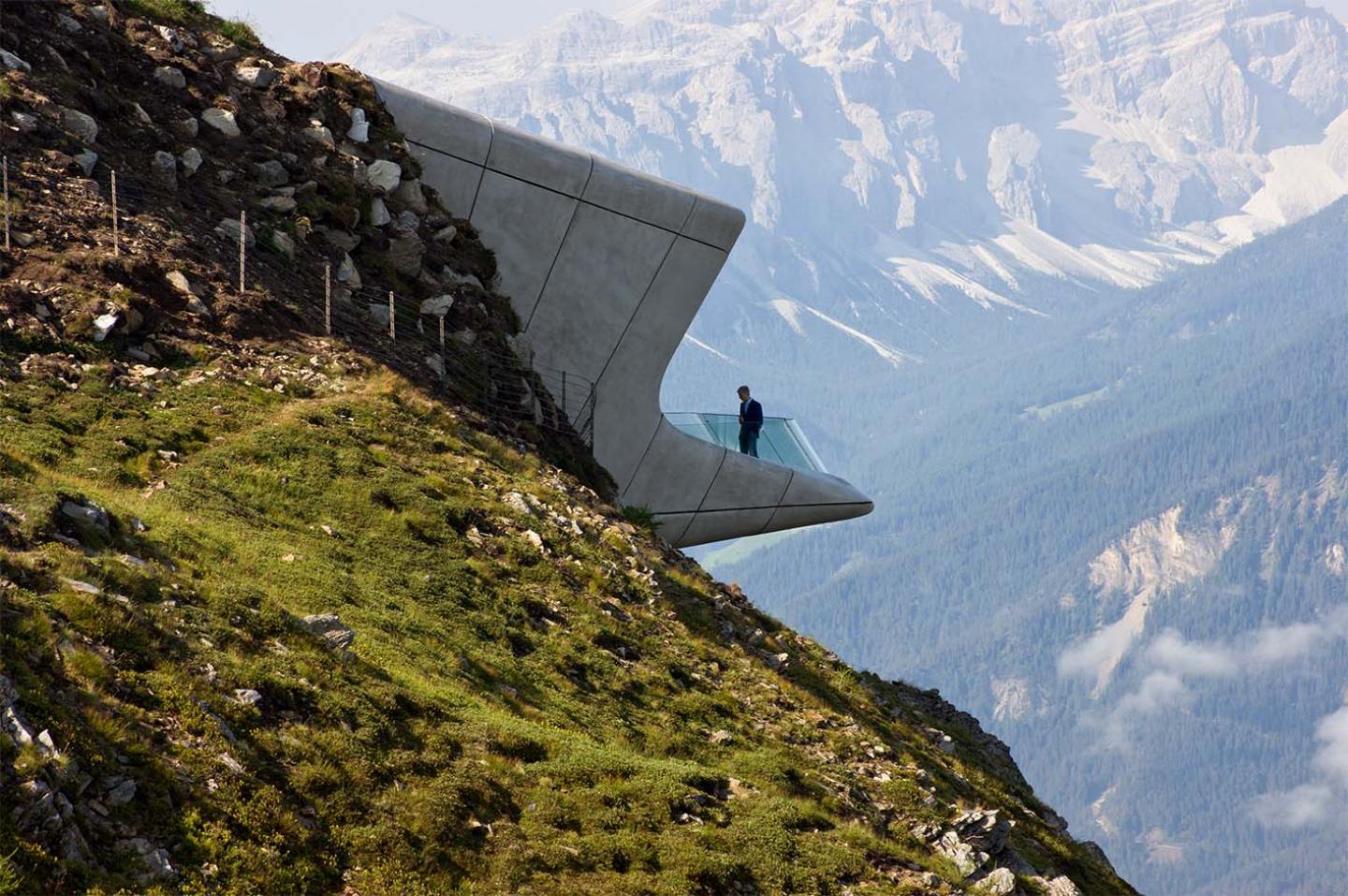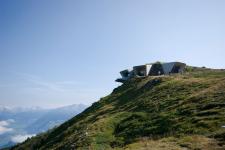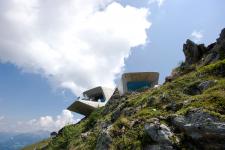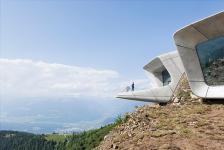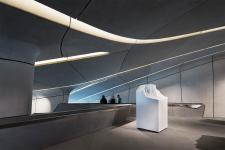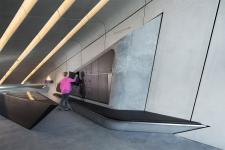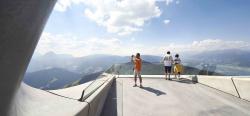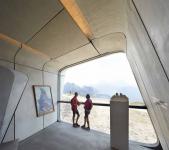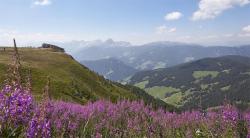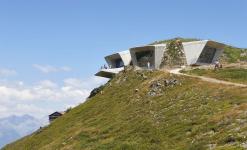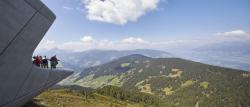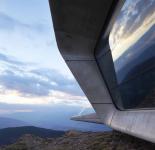Embedded within the summit of Mount Kronplatz, 2,275 metres above sea level at the centre South Tyrol’s most popular ski resort, the Messner Mountain Museum Corones is surrounded by the alpine peaks of the Zillertal, Ortler and Dolomites. It is established by renowned climber Reinhold Messner, the first person to climb all 14 mountains around the world over 8,000m and the first to climb Mount Everest without the aid of tanked oxygen. This, the sixth and final Messner Mountain Museum explores the traditions, history and discipline of mountaineering.
The Mountain Museum will welcome visitors throughout the year to explore Messner’s world where humanity is pushed to its limits, adding a cultural and educational institution to Mount Kronplatz.
Messner’s vision for a museum submerged into the peak of Mount Kronplatz had to incorporate three distinct vistas: “In the first, a window looking out southwest to the peak of the Peitlerkofel Mountain, in the second, another window should look south toward the Heiligkreuzkofel Peak, in the third, a balcony should face west to the Ortler and South Tyrol.”
Reflecting the tones of the jagged limestone peaks of the surrounding Dolomites, the exterior panels are formed from a lighter shade of glass-reinforced fibre concrete and fold within the museum to meet the darker interior panels that have the lustre and colouration of anthracite found deep below the surface. Informed by the shards of rock and ice of the surrounding landscape, concrete canopies have been cast in-situ and rise from the ground to protect the museum’s entrance, viewing windows and terrace.
A series of staircases cascade through the museum and connect the exhibition spaces, directing visitor circulation over three levels. At the lowest level, visitors pass the viewing windows as they traverse through the galleries to emerge out onto the terrace that projects 6 metres from the mountainside giving a 240 degree panorama across the Alps.
At 1,000 square meters, the museum is arranged over several levels to reduce its footprint. During construction, 4,000 cubic meters of earth and rock was excavated and then replaced above and around the completed structure – immersing the museum within Mount Kronplatz and helping to maintain a constant internal temperature. Wide windows allow natural light to penetrate deep within the museum, drawing visitors forward through the interior to the panoramic windows and viewing terrace cantilevered over the valley far below.
Constructed from in-situ reinforced concrete, the museum‘s structure has walls between 40-50cm, while its roof supporting the replaced earth and rock that embeds the museum into the mountain, is up to 70cm thick. The majority of the museum’s exterior and interior panels are also made from in-situ concrete, with a formwork of tapered surfaces used to generate the peaks and abutments of the exterior panels that convey the rock and ice formations of the surrounding landscape. A scaffold of steel sections, with adjustable brackets to offset tolerances, forms the museum’s substructure. Counter-plates for the connecting brackets are laminated directly within each panel during the prefabrication process.
2012
2015
Structural Engineer: IPM;
Mechanical Engineer + Fire Protection: Jud & Partner;
Electrical Engineer: Studio GM;
Lighting Design: Zumtobel;
Concrete: Kargruber und Stoll;
Façade: Pichler Stahlbau;
Facade Panels: B&T Bau & Technologie;
Elevation: 2,275 m;
Cost (privately funded): Euros 3 million;
Annual CO2 emissions: approx. 15 Kg/m²
Architect: Zaha Hadid Architects;
Design: Zaha Hadid, Patrik Schumacher;
Project Architect: Cornelius Schlotthauer;
Design Team: Cornelius Schlotthauer, Peter Irmscher;
Execution Team: Peter Irmscher, Markus Planteu, Claudia Wulf
Favorited 3 times
